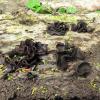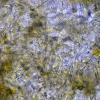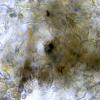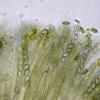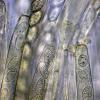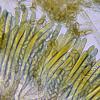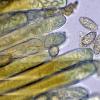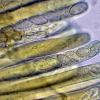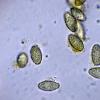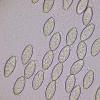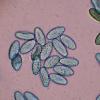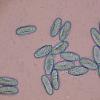
19-12-2025 10:10
Patrice TANCHAUDBonjour, récolte réalisée en milieu dunaire, a

18-12-2025 17:23
 Bruno Coué
Bruno Coué
Bonjour,je serais heureux d'avoir votre avis sur c

18-12-2025 21:17
Pol DebaenstThe identification took me to Byssonectria deformi

18-12-2025 18:07
Margot en Geert VullingsThese plumes were found on rotten wood.They strong

17-12-2025 18:35
 Michel Hairaud
Michel Hairaud
Bonjour à tous/Hi to everyone I am passing along

15-12-2025 15:48
 Danny Newman
Danny Newman
Melanospora cf. lagenaria on old, rotting, fallen

15-12-2025 15:54
 Johan Boonefaes
Johan Boonefaes
Unknown anamorph found on the ground in coastal sa

15-12-2025 21:11
 Hardware Tony
Hardware Tony
Small clavate hairs, negative croziers and IKI bb

15-12-2025 07:09
 Danny Newman
Danny Newman
indet. Rutstroemiaceae sp. on unk. fallen leavesMc
¿Pachyella?
Josep Torres,
22-05-2025 08:55
A Pezizal sprouting scattered in small groups on the peeled surface of a trunk lying on the ground in a fluvial forest next to a stream, with specimens deformed by pressure between them.
Ascomata of considerable size, some exceeding 4 cm, brown with faint violet hues, not exuding any latex upon contact or injury, and of fragile consistency.
Hyphae of the medullary exciple are filamentous, with an intricate texture and some very evident swellings.
Beneath these, other hyphae are more globose and larger.
Octosporic asci with only a slight, very diffuse amyloid reaction to Melzer.
Ellipsoidal ascospores decorated with obvious warts, very visible in Cresyl Blue, with spore measurements obtained by natural sporulation and in water of:
(19.3) 19.9 - 22.5 (23.8) × (9.8) 10.1 - 11.1 (11.4) µm
Q = (1.7) 1.9 - 2.2 (2.3) ; N = 40
Me = 21.2 × 10.6 µm ; Qe = 2
If for any reason you need more images, just ask.
Considering its lignicolous habitat and the diffuse amyloid reaction of the asci to Melzer, I think of Pachyella, but without any conviction. It's even possible that I had studied this species before, but I can't remember and I'm completely stuck. Any feedback from you will be appreciated.
Thank you very much in advance.
Best regards.
Marek Capoun,
22-05-2025 17:04

Re : ¿Pachyella?
Hello, Josep,
I would probably look in the genus Phylloscypha.
Marek
I would probably look in the genus Phylloscypha.
Marek
Nicolas VAN VOOREN,
22-05-2025 17:22

Re : ¿Pachyella?
Marek is right.
Josep Torres,
23-05-2025 07:44
Re : ¿Pachyella?
Thank you both very much.
Of course, Phylloscypha, and most likely Phylloscypha phyllogena. I rightly mentioned in my post that I didn't rule out having studied it before. I've studied Phylloscypha phyllogena on a couple of occasions, and in both cases, it grew in the soil. In addition to the more pronounced amyloid reaction of its asci, the fact that it appeared directly on the wood confused me greatly. Based on this fact alone, I ruled it out from the start.
Best regards.
Of course, Phylloscypha, and most likely Phylloscypha phyllogena. I rightly mentioned in my post that I didn't rule out having studied it before. I've studied Phylloscypha phyllogena on a couple of occasions, and in both cases, it grew in the soil. In addition to the more pronounced amyloid reaction of its asci, the fact that it appeared directly on the wood confused me greatly. Based on this fact alone, I ruled it out from the start.
Best regards.

